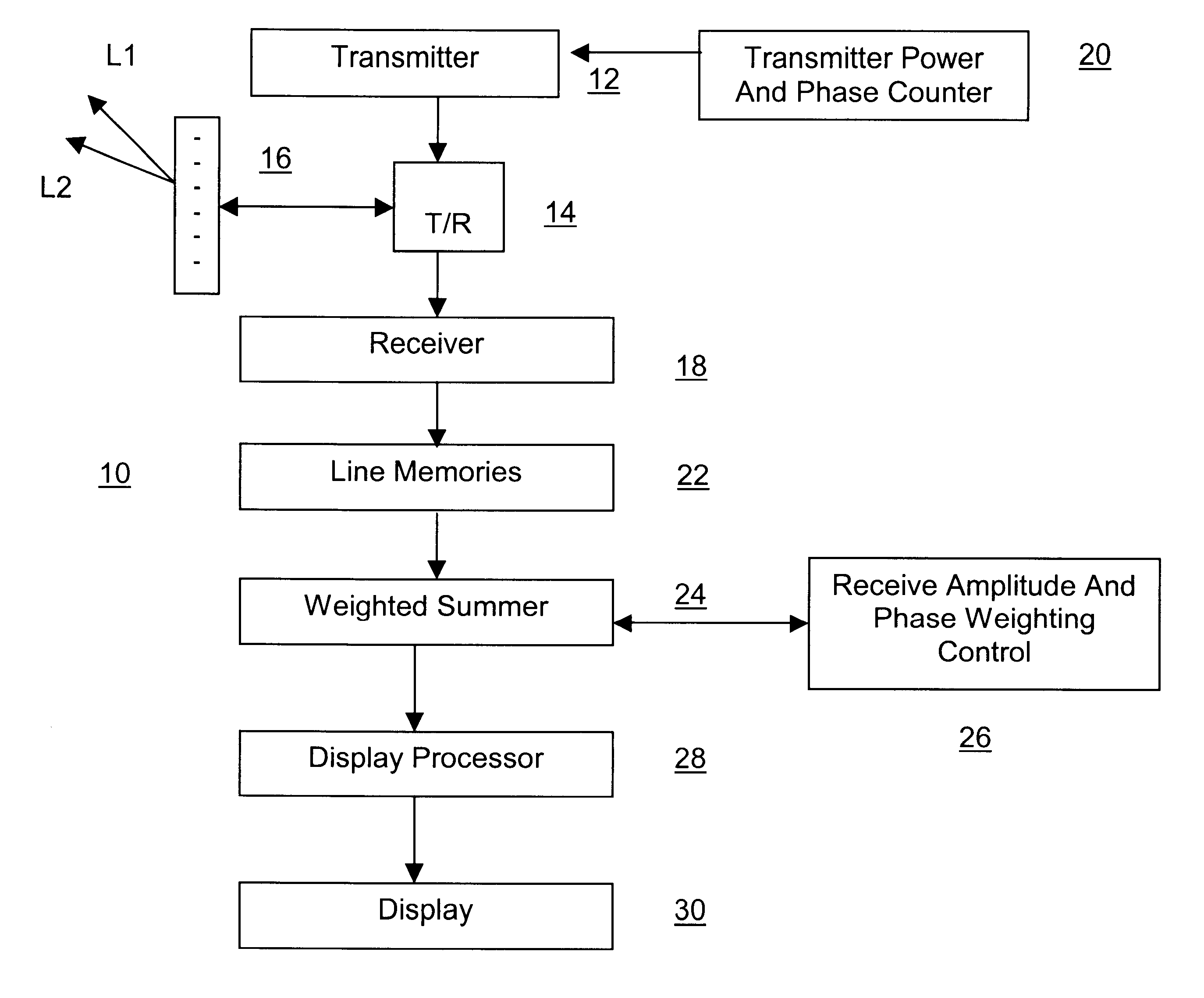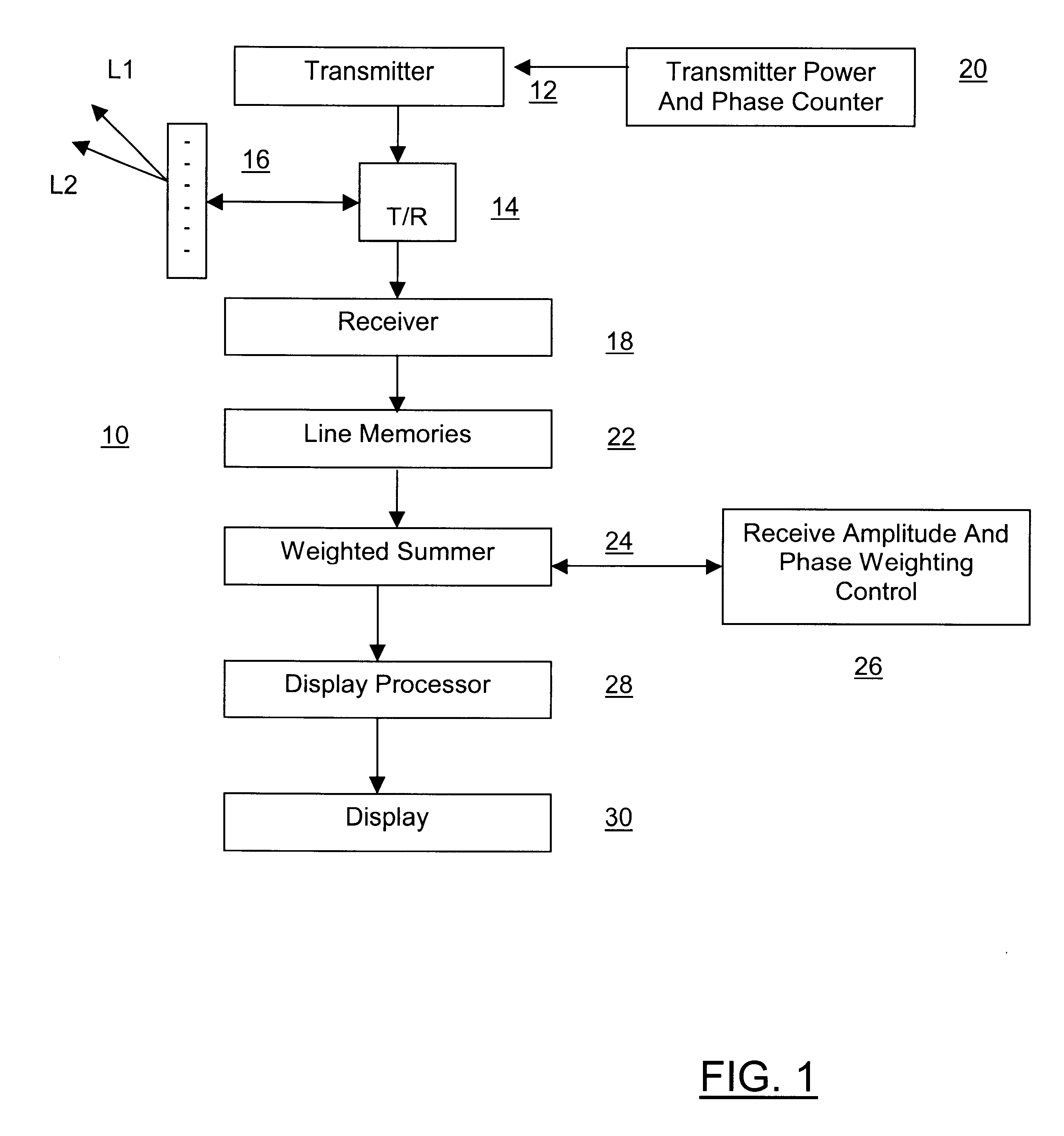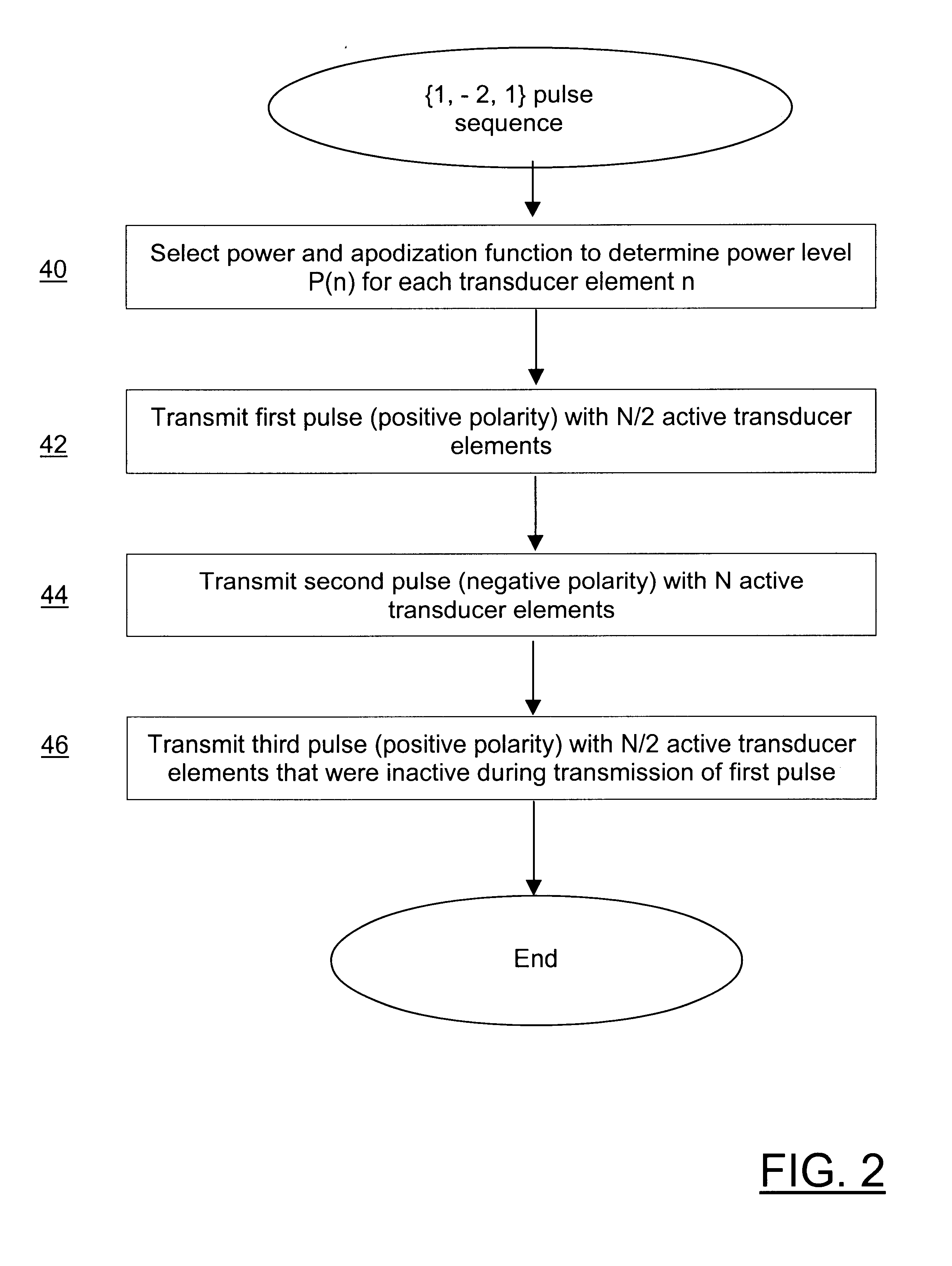Medical ultrasonic imaging pulse transmission method
a technology of ultrasonic imaging and pulse transmission, applied in the field of medical ultrasonic imaging pulse transmission method, can solve the problems of affecting the sensitivity of second harmonic signals
- Summary
- Abstract
- Description
- Claims
- Application Information
AI Technical Summary
Benefits of technology
Problems solved by technology
Method used
Image
Examples
example 2
of FIG. 7 is closely related to Example 1, but in this case the first subaperture for the first positive-polarity pulse includes all even-numbered transducer elements, and the second subaperture for the second positive-polarity pulse includes all odd-numbered transducer elements.
examples 3 , 4 and 5
Examples 3, 4 and 5 relate to a transducer array having 16 transducer elements. As shown in Example 3, transducer elements are grouped in pairs, with adjacent pairs of transducer elements active in either, the first or second subaperture for the positive-polarity pulses, and all of the transducer elements active for the negative-polarity pulse.
example 4
is similar to Example 3, except that the transducer elements are grouped into groups of four, with each group of four transducer elements active in one or the other of the first and second subapertures.
It is not essential that the same number of transducer elements be included in the first and second subapertures. For example, in Example 5 the first subaperture for the first positive-polarity pulse includes six transducer elements (1, 2, 13-16), while the second subaperture for the second positive-polarity pulse includes 10 transducer elements (3-12). In general, any desired subset of transducer elements can be used for the first subaperture, and the remaining subset of elements can be used for the second subaperture. Whether or not the two subapertures are equal, it is preferred that the two subapertures when added together equal the full aperture. The disadvantage of making the two subapertures unequal in size is that this will reduce the sensitivity of the approach to cubic funda...
PUM
 Login to View More
Login to View More Abstract
Description
Claims
Application Information
 Login to View More
Login to View More - R&D
- Intellectual Property
- Life Sciences
- Materials
- Tech Scout
- Unparalleled Data Quality
- Higher Quality Content
- 60% Fewer Hallucinations
Browse by: Latest US Patents, China's latest patents, Technical Efficacy Thesaurus, Application Domain, Technology Topic, Popular Technical Reports.
© 2025 PatSnap. All rights reserved.Legal|Privacy policy|Modern Slavery Act Transparency Statement|Sitemap|About US| Contact US: help@patsnap.com



